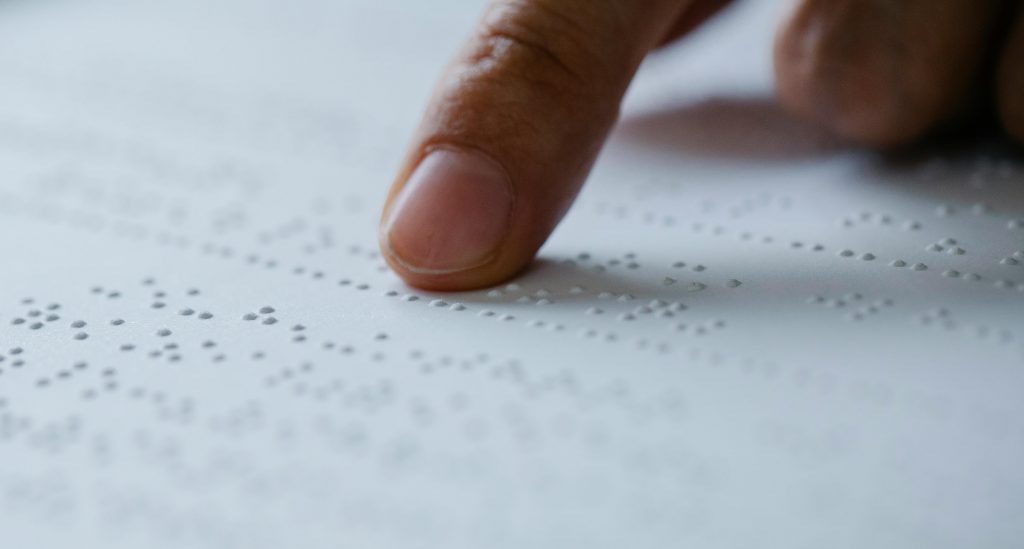
When we think of Braille, most people imagine books or signs on lift buttons. But Braille has been gradually making its way into more unexpected places, which is a significant leap in the right direction. It shows how society is starting to understand that inclusivity means more than just ticking boxes. It means making sure blind and visually impaired people can access the same everyday experiences as everyone else.
Here are some examples of how Braille is being used in effective ways, and why they matter.
1. Braille on LEGO Bricks
Yes, LEGO. The famous toy company has introduced LEGO Braille Bricks to help children who are blind or have low vision learn Braille in a fun and interactive way. Each brick represents a letter or number in the Braille alphabet, and they also have printed letters on them so that sighted children can join in too.
This encourages inclusive learning. It lets all children play and learn together, which helps break down social barriers at a young age.
2. Braille on Restaurant Menus
Some restaurants have started offering Braille menus, which is a small but powerful step. Without Braille, blind diners have to rely on someone else to read it out loud, which takes away independence.
By providing Braille menus, restaurants show they care about making every customer feel welcome. It also allows blind people to order for themselves, just like anyone else.
3. Braille on Currency
Many countries have started adding tactile features, including Braille-like markings, to their banknotes. These features help people identify different note values by touch.
For example, in the UK, polymer banknotes have raised dots and lines to help distinguish between denominations. This gives people with visual impairments more confidence when handling money and makes everyday transactions easier.
4. Braille on Makeup Packaging
Some makeup brands now include Braille labels on their products, especially on boxes or lids. This allows blind users to identify items like lipstick, foundation, or moisturiser without needing assistance.
A good example is L’Occitane, a skincare and beauty company that has used Braille on its packaging for years. It shows that inclusivity isn’t just for essential items; it can and should be part of lifestyle products too.
5. Braille in Museums and Art Exhibits
Some museums and galleries include Braille descriptions next to artwork or tactile versions of visual exhibits. This makes art more accessible to blind visitors.
In many places, you can now find touch-friendly exhibits where blind visitors can feel sculptures or read Braille panels that describe what’s being shown. This opens up the world of art and history to people who are often left out of visual experiences.
References
Foundation for Blind Children (2023) 10 Fun Facts About Braille [Accessed 25 September 2025] Available at: https://seeitourway.org/braille-facts/
LEGO (2025) Learn Braille, Through Play [Accessed 25 September 2025] Available at: https://braillebricks.com/